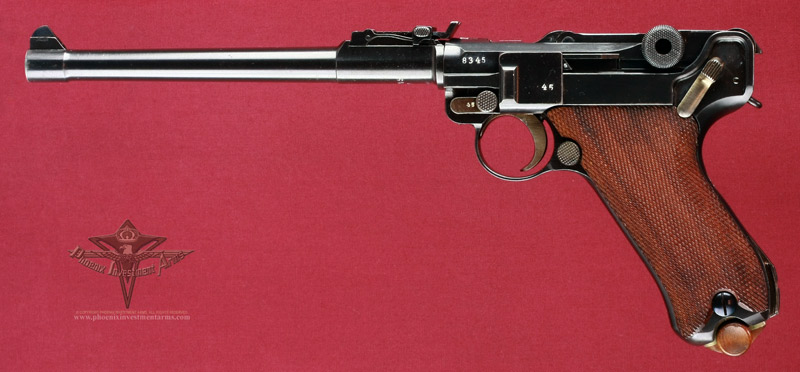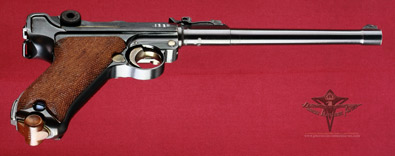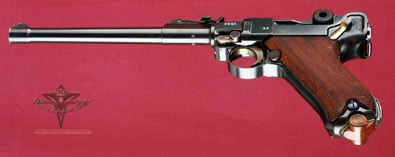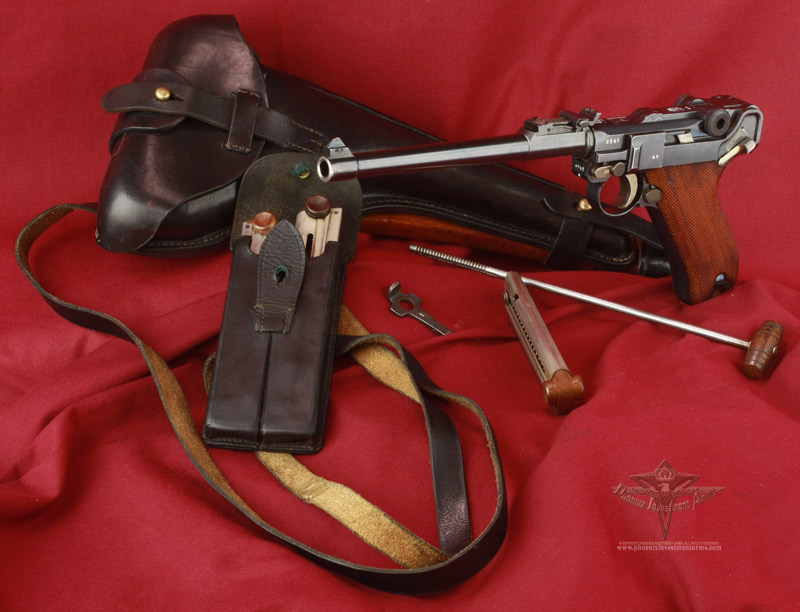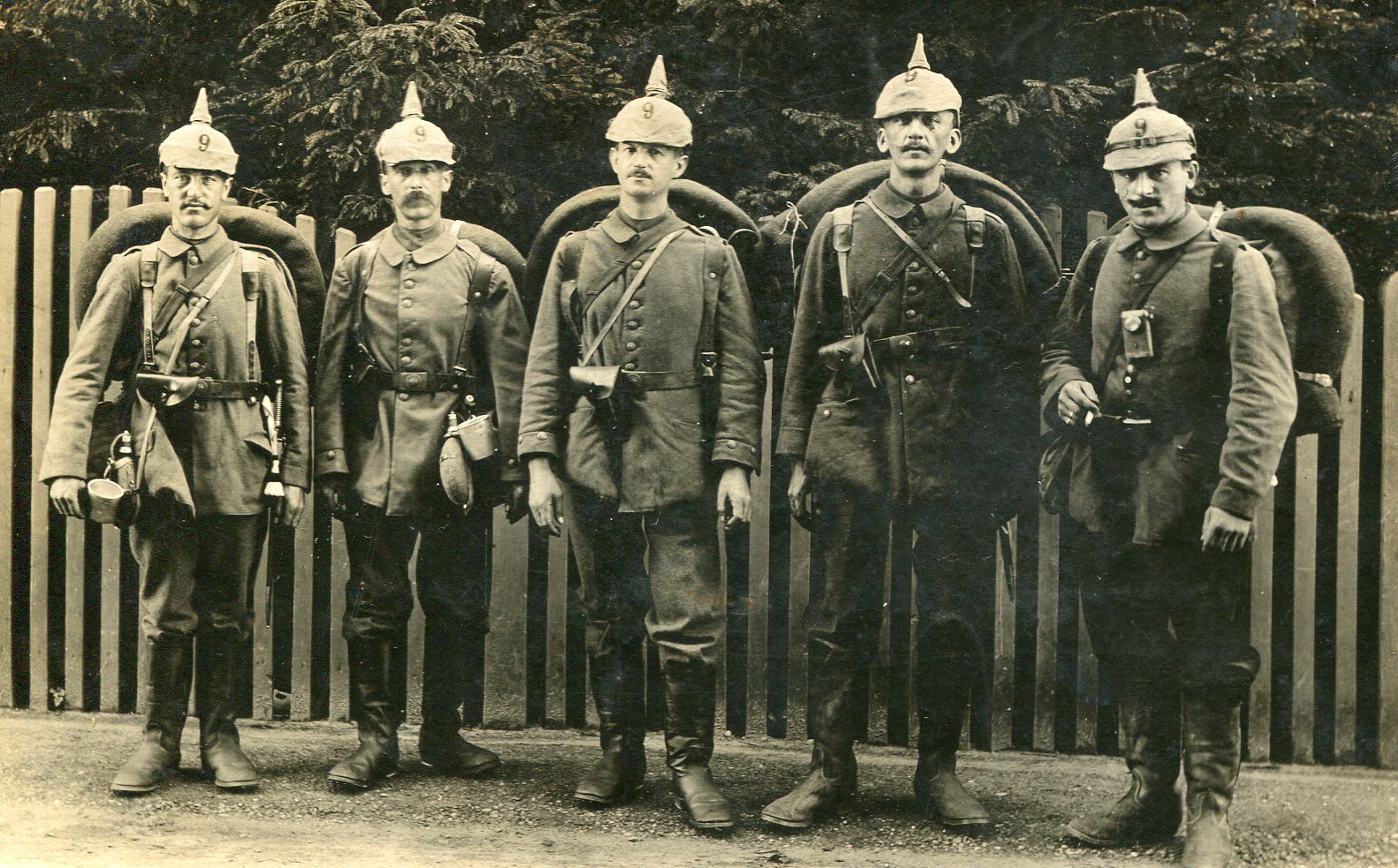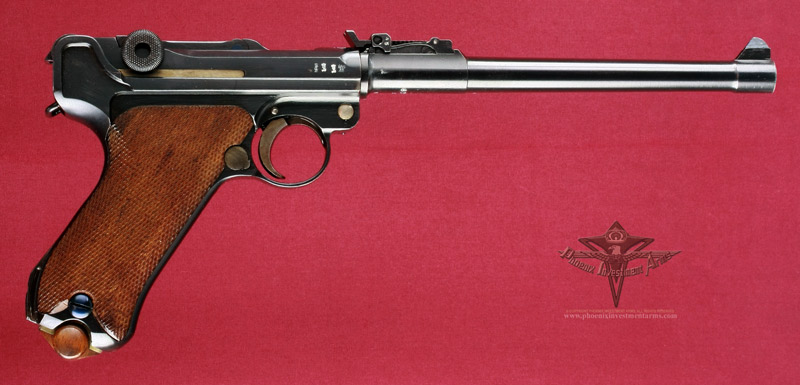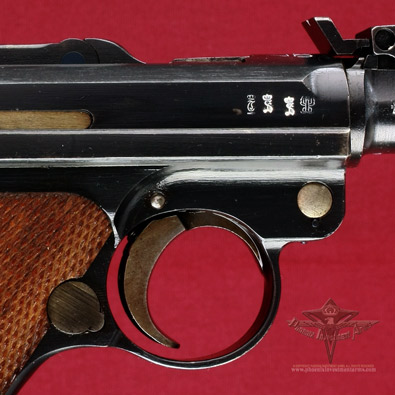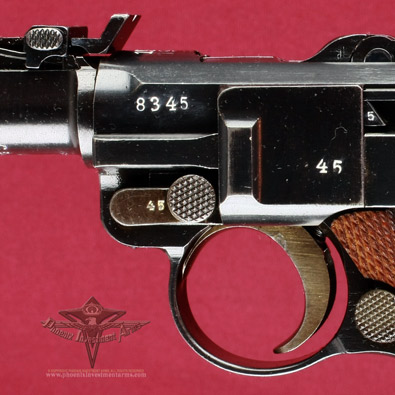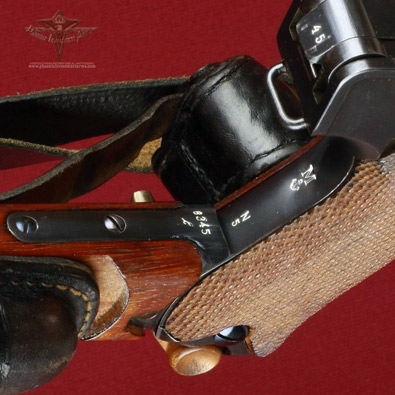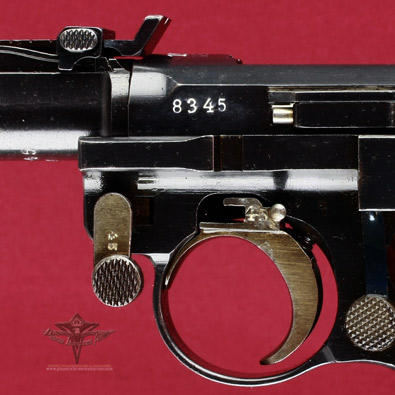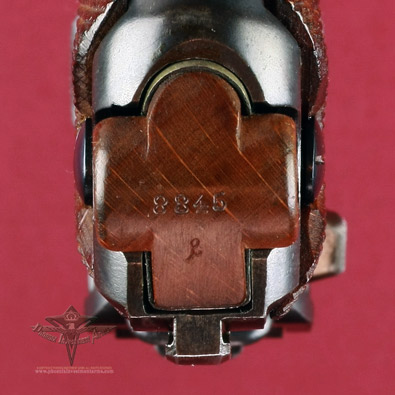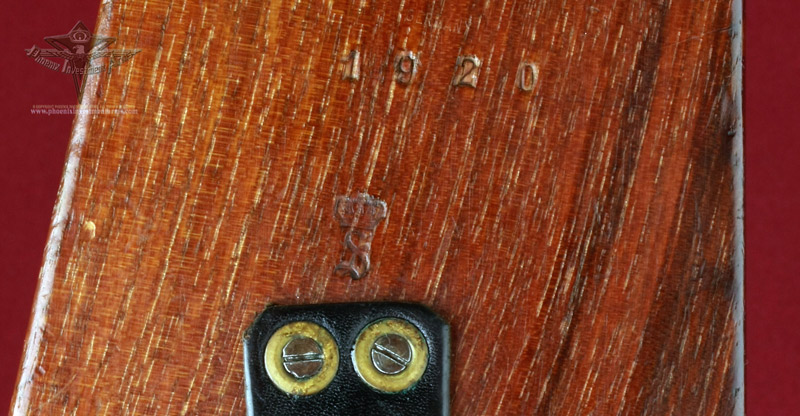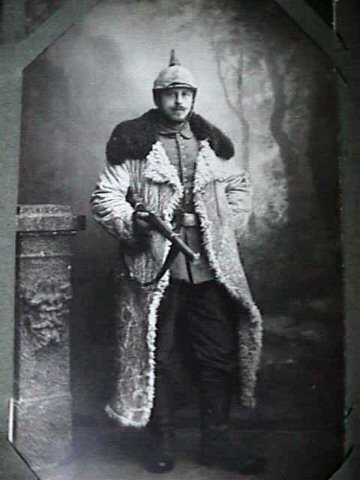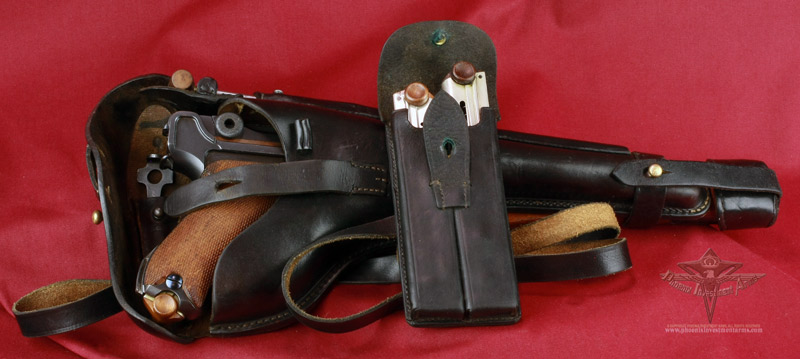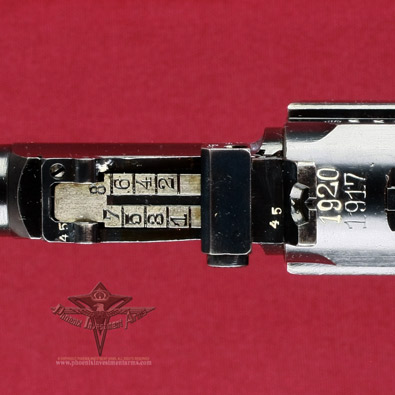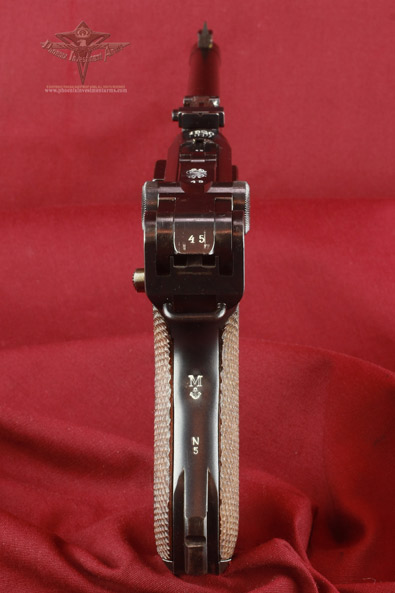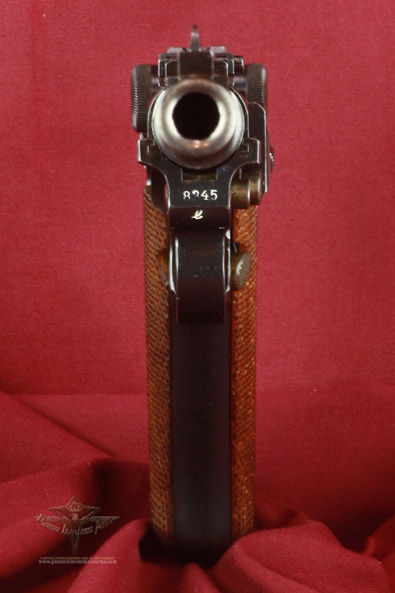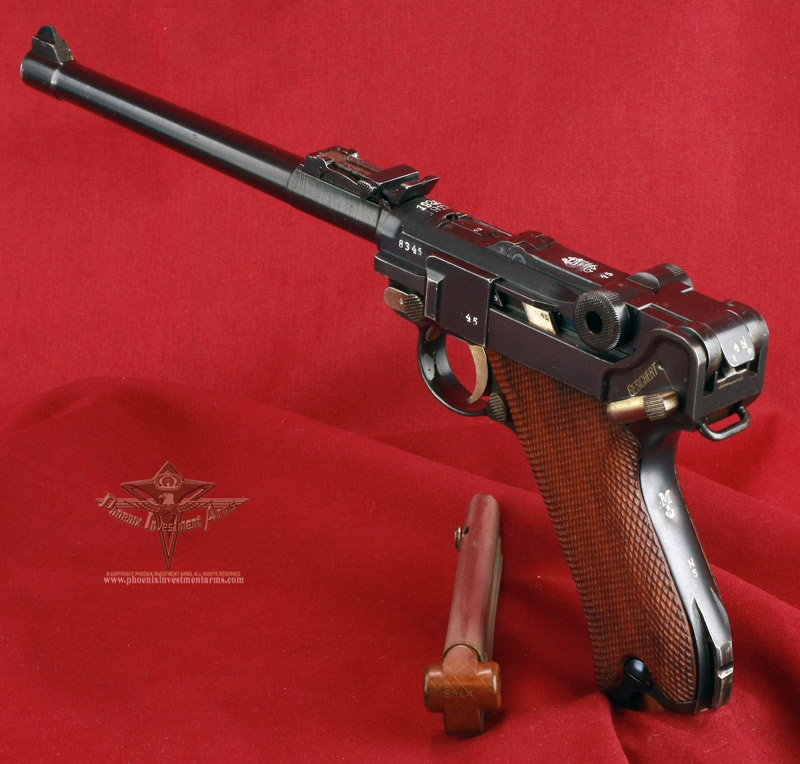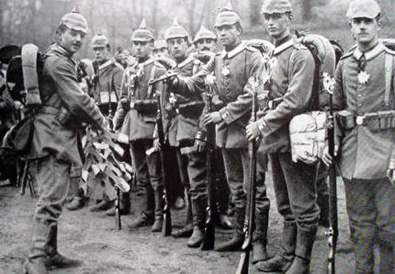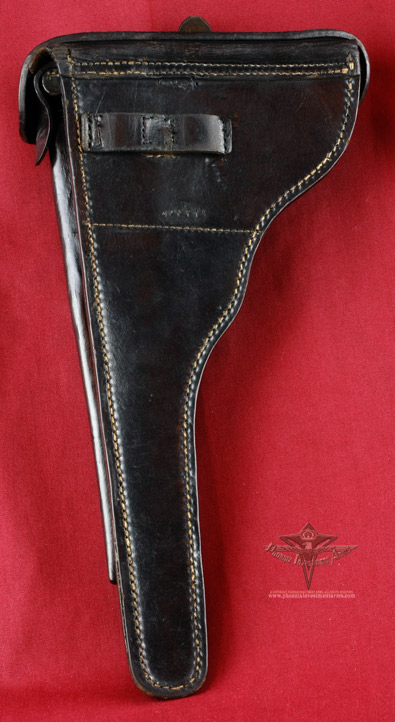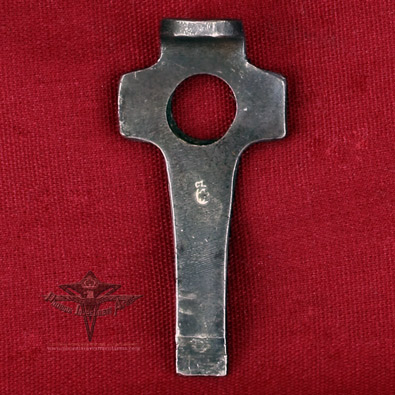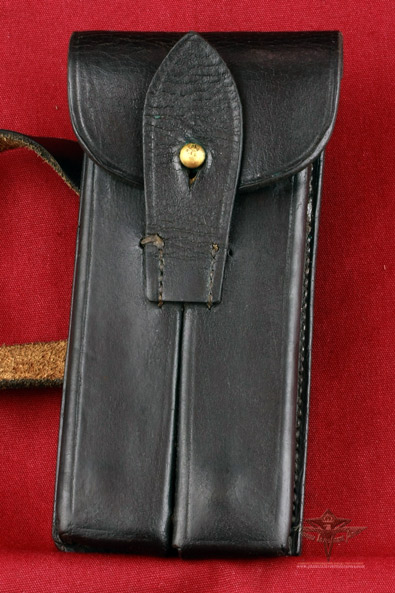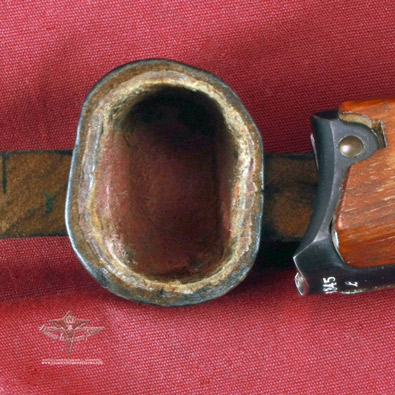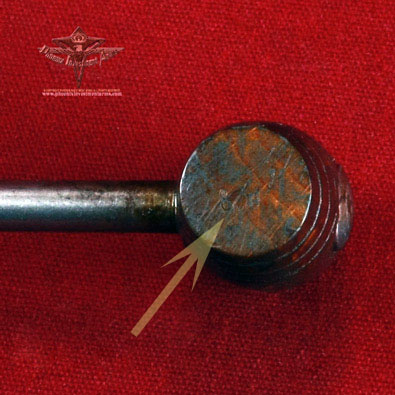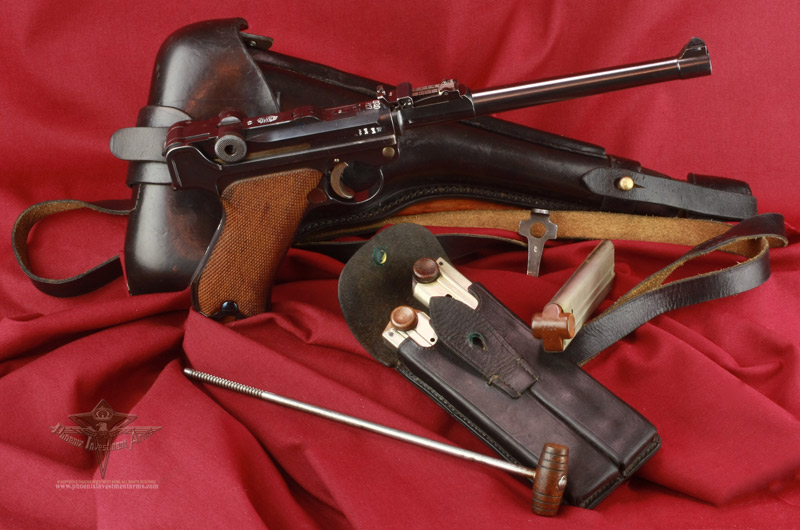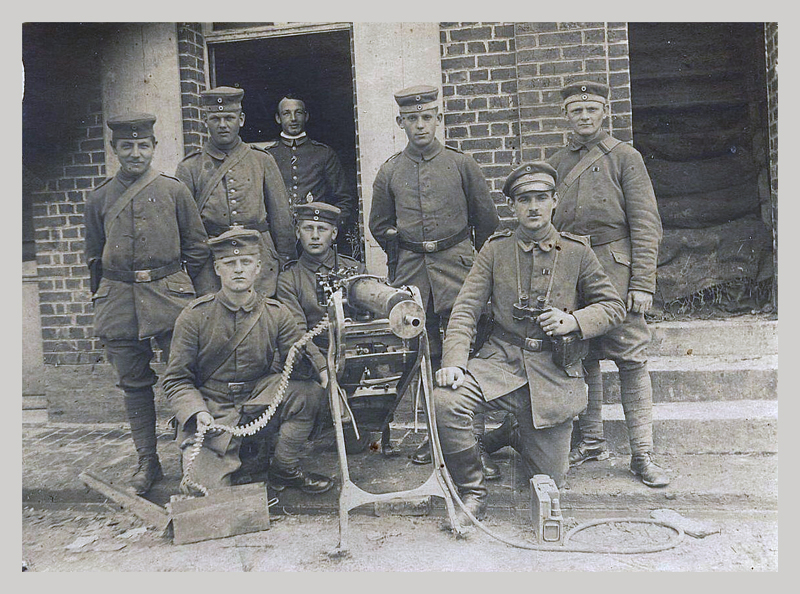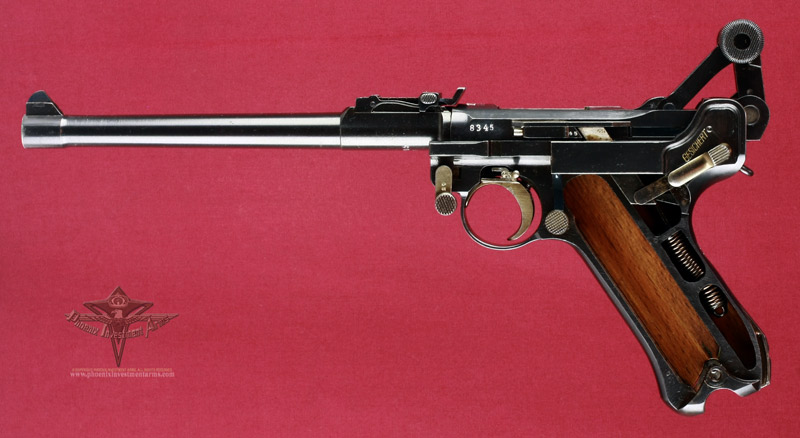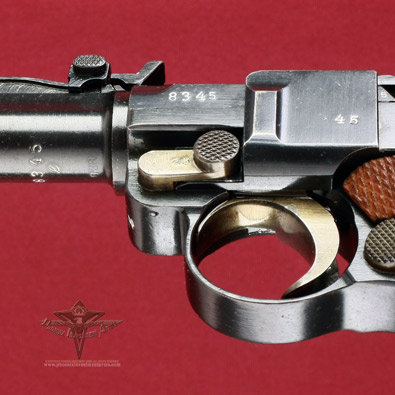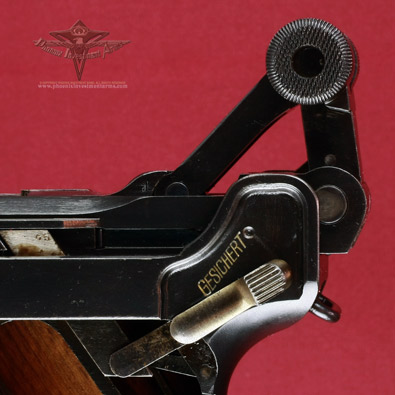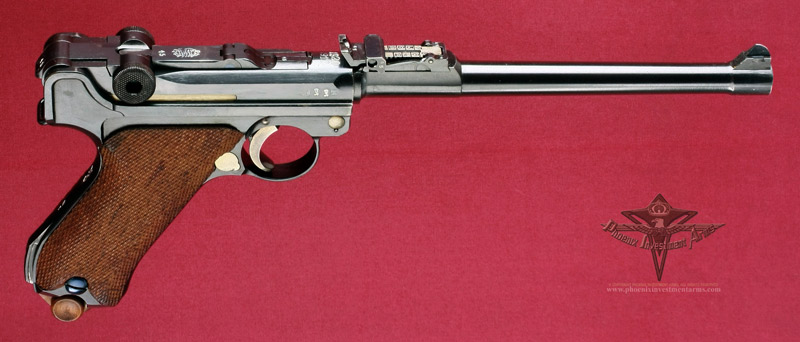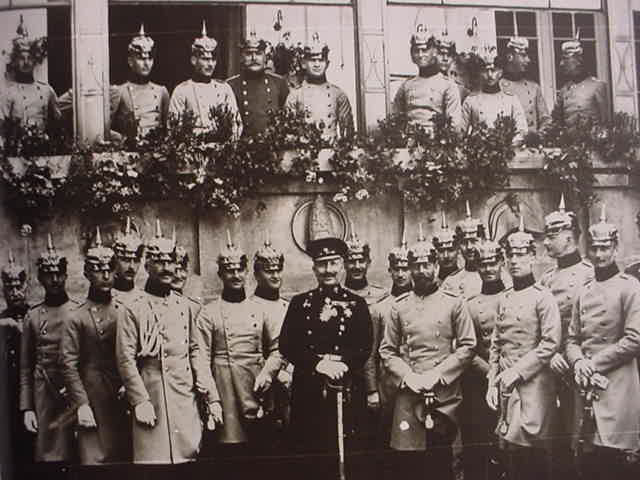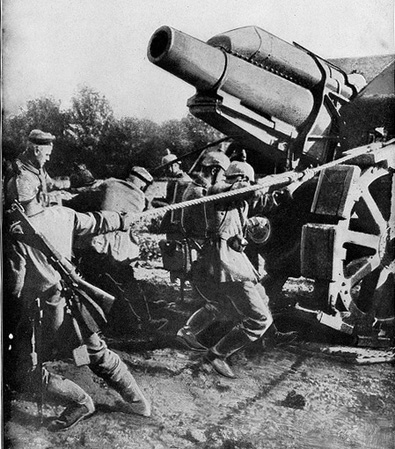|
|
|
|
This is a 1914 Model, chamber dated 1917 DWM 8" model with the 800 meter adjustable rear sight mounted on the barrel. The 1917 Chamber Date is one of the most difficult of the Artillery models in this pristine condition. The original intent was to issue the 8" weapon to gun boat crews but it then became standard issue to machine gun crews and artillery units. After WWI the weapon was stamped 1920 to indicate it was brought back under government control and then issued to the Weimar navy. A very rare variation. (1463) |
|
|
|
|
| NOTE: Photographs taken today with the high mega-pixel camera show more than we sometimes can see with the human eye. Magnified close-ups show us tool marks and natural surface conditions that one normally doesn't see in the ordinary handling of the weapon. Photographs are copyrighted, all rights reserved, any extraction, reproduction or display of gun pictures without the express consent of the Phoenix Investment Arms is strictly prohibited. Before your purchase please read Legal for Conditions of Sale. Thank you for your cooperation. | |
|
|
Tale of the Gun The new (Weimar) German Government after WWI found itself with an armed citizenry with all the soldiers bringing their weapons home from the war. On August 1st, 1920 the German authorities issued an order from Berlin that cited the impending disarming of the people required that all weapons of the armed forces were to be marked with the date to prevent people from stealing military supplies and selling them back to the government. On August 7th, 1920 rewards were begun for the turn-in of weapons to the government paying 100 Marks (then about $23.50) for a small arm until October 10th after which the reward was to be reduced to 50 Marks. Thus began the disarming of the citizenry; a lesson that should not be lost on free people. This is truly an extraordinary Parabellum, in violation of the Treaty and escaping to the US for the enjoyment of the selective collector. |
|
The Treaty of Versailles restricted barrel length to less than 100mm (4") so the "Artillery" models were usually marked for export, stamped "Germany" and sold overseas. However, this artillery was re-issued to the fledgling Weimar Navy, Proofed with the M (Marinen) and Anchor and the N (Nordsee - North Sea) and designated #5 or the 5th gun. |
|
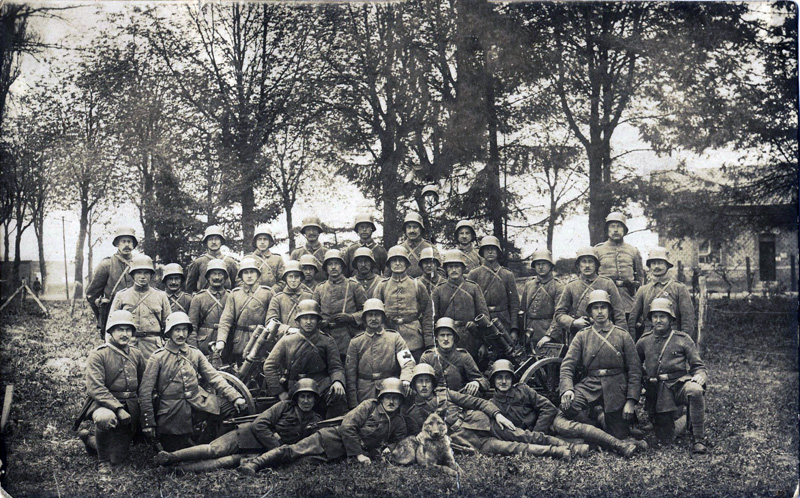 |



